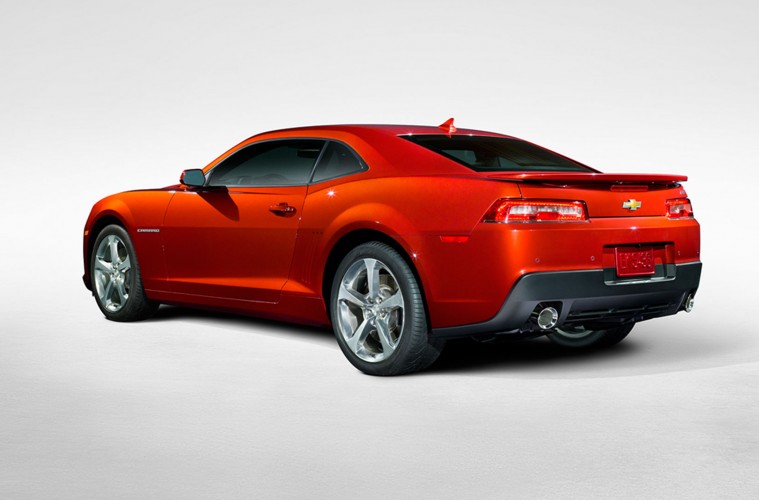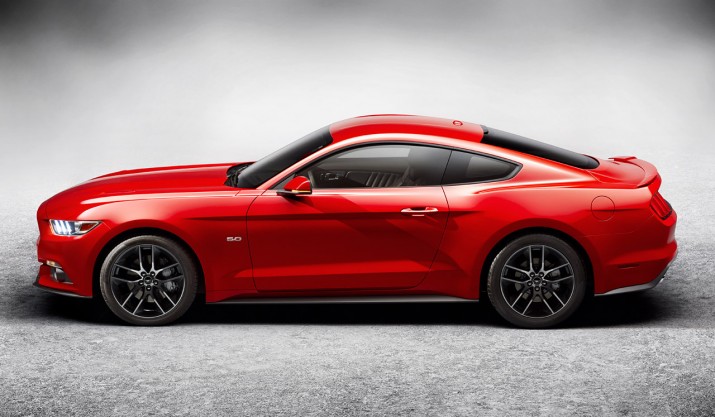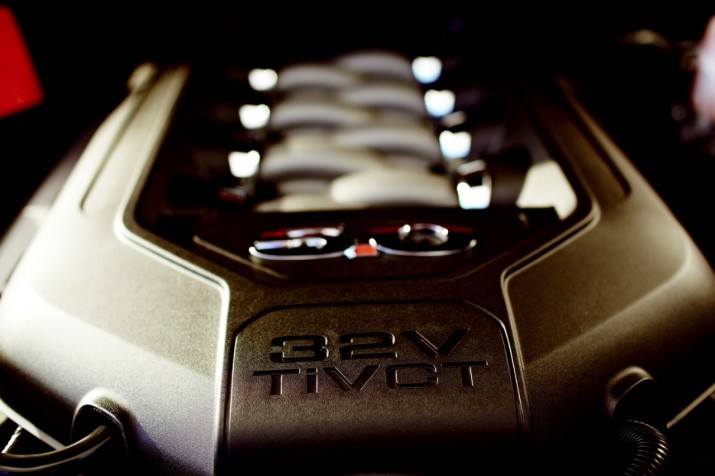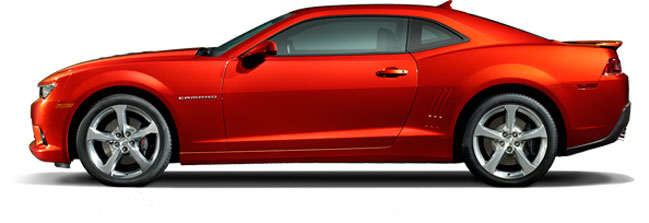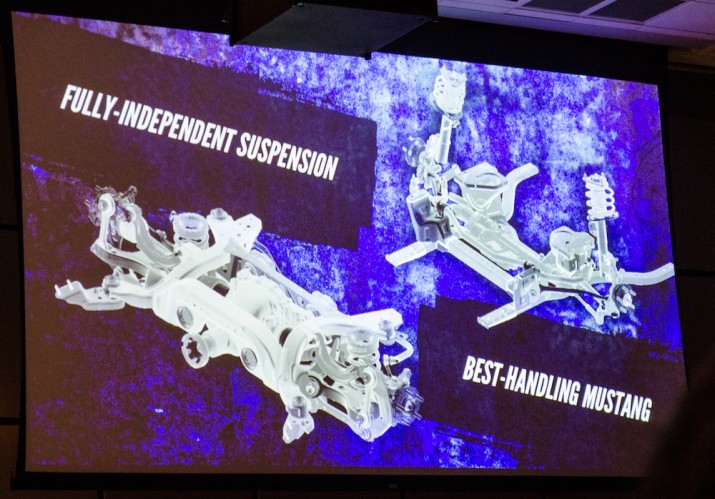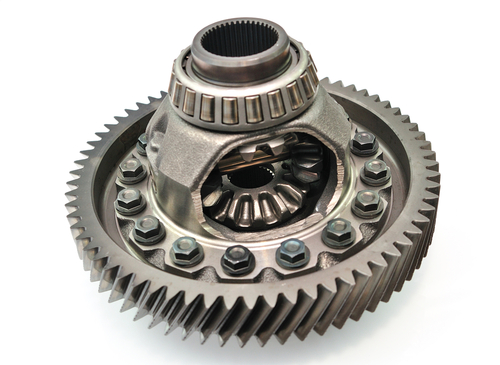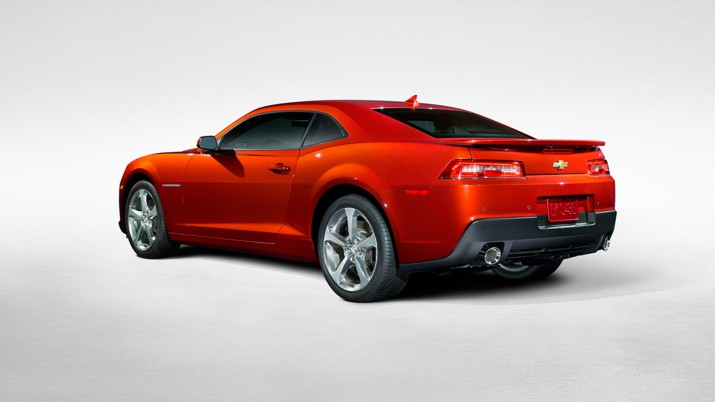Throughout the course of muscle car history, one rivalry has remained. Ford is forever in battle with Chevrolet over pony car supremacy. Ford will argue that their Mustang has been in continuous production for 50 years, whereas the Camaro did leave production for awhile. There is a new Mustang coming, and future battles will be fought on the streets, at the track, and in the pub. We know a lot about what will be available with the new Mustang GT, and the 2014 Chevrolet Camaro 2SS is loaded with technology that might give the Mustang a run for its money. But how do the two compare? Track data can only be obtained from running both vehicles on a track, but we can still compare many of the vehicle options and performance characteristics to help determine if one is better than the other. It’s time to break it down!
READ: Motor Review’s Ford Mustang Information Page
Engine Options:
The 2015 Mustang GT will carry over the 5.0L “Coyote” V8 from the previous model year. Ford will likely tune the engine a bit, but they are claiming at least 420hp out of the engine. The 6.2L V8 in the Camaro makes 426hp. Those two numbers are near as makes no difference the same, making other factors essential in who wins the drag race.
Vehicle Weight:
When vehicles make similar horsepower figures, like the Camaro and the Mustang, the weight over the vehicle will seriously help determine who would win a drag race. The Camaro SS weighs 3,860lbs with the manual transmission. The 2014 Mustang GT weighs 3,618lbs when equipped with the manual transmission. The Camaro is over 200lbs heavier, and sources indicate that the 2015 Mustang may have lost an additional 200lbs of body weight with the redesign. That would make the weight difference approximately 400lbs, which is pretty substantial.
Drag Race Conclusions:
In a straight line, with both vehicles driven by the same driver in the exact same conditions, the 2015 Mustang GT should be the faster vehicle. Drag races often do not occur in a vacuum, but if there is truly 400 or more pounds of weight in the Mustang’s advantage, the Camaro will most likely lose the straight-line battle.
Suspension, Brakes, and Handling:
Finally, the 2015 Mustang will feature a fully-independent rear suspension setup. This will allow the suspension to handle each rear wheel separately, depending on what type of road it is on. This type of setup should also pay dividends on a road course or twisty back road. Mustang engineers have done a great job in making a live-axle rear-end work on the 2014 Mustang and older, but working with a completely independent rear setup should allow them much more tuning possibilities.
The 2014 Camaro SS does not have the amazing Magnetic Ride Control that is optional on the ZL1 and Z/28. It makes do with a similar rear-suspension setup as the Mustang. One advantage to the Camaro is that Brembo brakes are standard on all four corners. Additionally, the dealer can install the 6-piston monsters from the ZL1, dramatically improving the car’s stopping power. The Camaro SS also comes standard with a limited-slip rear differential. This can have a dramatic effect on handling.
The Mustang has never really had good brakes. Yes, there is a track pack available on the Mustang that includes Brembo-branded front stoppers, but they typically fade after just a few laps of use. That was one of Motor Trend’s biggest complaints when they tested the Mustang Shelby GT500 for Best Driver’s Car.
Handling Conclusions:
Handling is a combination of suspension, brakes, tires, and weight. The Camaro’s ability to stop really well is advantageous when the roads get twisty. It is unclear if the 2015 Mustang’s Brembo option will be a better setup than previous years, but we haven’t heard otherwise. The Camaro’s limited slip differential standard does give it an advantage. Ultimately, the 400 pound weight difference will come into play here. Based on what we know, we are going to presently declare the handling contest a draw.
Technology:
The 2015 Mustang will be available with HID headlights, MyFord Touch with navigation, push-button start, rear-view camera and parking sensors, radar-assisted cruise control, and blind spot monitoring. The GT will also feature a software-based launch control setup for quick launches. The Mustang will be a thoroughly modern Ford vehicle, containing almost all of their safety and convenience technologies. We sampled Ford’s radar cruise in the Lincoln MKZ in summer of 2013.
The 2014 Camaro SS in 2SS trim also has some good technology. Navigation, HIDs, and and a rear-view camera. No radar cruise control or blind spot monitoring is available, which is surprising based on visibility from the car. One technology that the Camaro does offer is a heads-up display. A HUD makes it easy for the driver to see speed, engine revs, radio station, and navigation data without having to take his or her eyes off the road.
Price:
Pricing hasn’t been announced on the Mustang, but the 2014 Premium GT starts at about $35k. The Camaro 2SS starts at $37K, but has more standard technology. New models often come with a higher price tag. Though, in order to stay competitive, the Mustang will logically be priced similar to the Camaro.
Overall Conclusions:
Mustang and Camaro fans will always believe that their vehicle is best. On paper, both vehicles seem very similar in options, power, and performance. The Mustang has recently had a winning weight advantage, and we expect that to continue with the new car. However, a performance competition, at a drag strip or race track, will be decided by the driver and not the car. Once the new Mustang hits the streets performance tests will undoubtedly ensue. Until then, we still are not comfortable in calling a winner. For motoring enthusiasts, that is a good thing. Competition makes the entire industry better.

